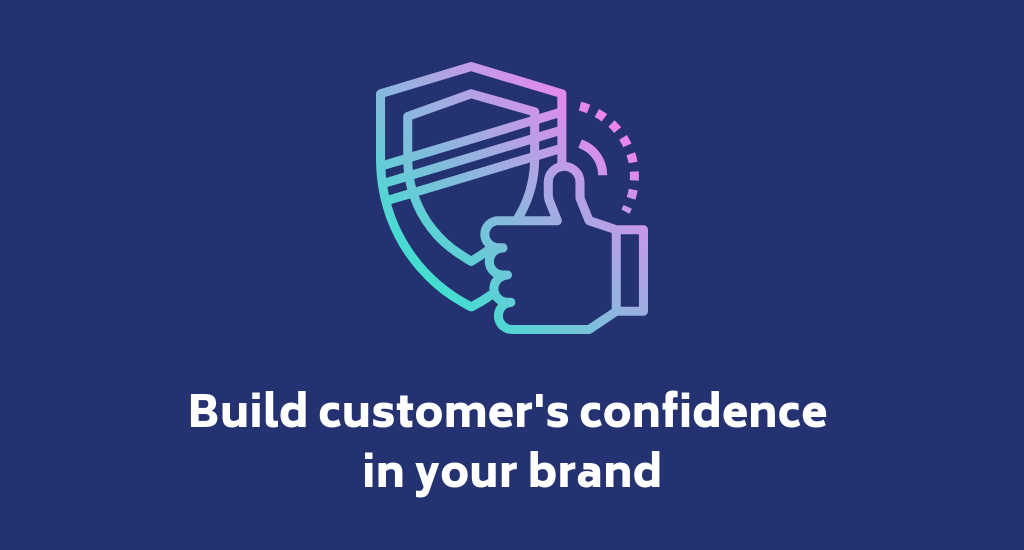Brand trust is one of the key success factors in eCommerce. Although varied assortment and low prices are important, the overall trustworthiness of your online store is what gets you sales.
Put yourself in customer’s shoes
Take a look at your website and imagine that it’s the first time you see it. Would it feel comfortable to leave your credit card info with this company? If your answer is not exactly an enthusiastic “yes, of course!”, then read on to find out how to increase the trustworthiness of your business.
1. Make your website efficient and user-friendly
This is a no-brainer. An online store should have a short page loading time and pleasant, easy-to-use interface. Spare your clients the frustrations of unnecessary waiting or getting lost in unintuitive onsite navigation. A study conducted by Netimperative revealed that:
- 76% of consumers declare that website usability is the main factor that influences their buying experience
- 65% of consumers are not likely to wait more than 3 seconds for the page to load
- 96% of respondents believe that website design strongly influences their purchase decisions
Therefore, to increase customers satisfaction, check if your website is:
- Aesthetically pleasing – in a way that follows the trends in your market niche.
- Easy to navigate – take care of a proper structure of information. Implement search bar and intuitive filters.
- Quick to load – if it takes more than a few seconds to load, upgrade your hosting.
2. Put your contact details on display
Consumers are aware of the risks involved in shopping online. Make sure that the fear of being scammed does not cross the minds of potential clients when they are browsing your products. According to this survey, as many as 46% of respondents leave their money only with stores that have clear contact details.
3. Take security precautions
Assure customers that you actively fight back against hackers that could try to steal their data. Here are some of the security measures that you should use to prevent potential security exposure:
- If you accept credit cards, then keep your website PCI compliant
- Get an SSL certificate to show that data sent to you are securely encrypted.
- Use HTTPS protocol on pages that collect data to enforce encryption further.
- Use a proxy firewall – it adds an intermediary connection to make it harder for attackers to get into your network.
4. Be accessible and act quickly
Before your client makes a definitive purchase decision, they often have questions about the product or delivery. It’s impossible to predict all inquiries, so a FAQ section on your website is not enough. Monitor your business inboxes to provide help as soon as possible. Whether on social media, or email never let your customers wait long for an answer.
Find out what are 10 golden rules of having a top customer service.
5. Make payments stress-free
For customers, the checkout process is the most stressful part of the whole buying experience. With the safety of their savings at stake, no wonder they are cautious. To make it easier for them (and therefore to reduce cart abandonment rates in your store) make payments clear and hassle-free.
Firstly, explain what a client can expect to happen when he or she clicks that “buy now” button. Provide information about payment methods, delivery options and any additional fees beforehand. Secondly, reduce distractions to the minimum. Pop-ups, banners and sidebars belong on product pages, keep the checkout simple.
6. Encourage your clients to leave opinions
This study shows, that 67% of consumers are influenced by opinions on review websites. Low rating on such sites might hurt your business. To counteract negative opinions expressed by internet users, encourage your satisfied clients to post their reviews. Trustpilot, for example, allows businesses to send out invitations to verified customers.
Also, develop a habit of answering both negative and positive opinions about your business in the most common review services. That way people scrolling through the profile of your company will have the opportunity to read both sides of the story.
Review CodesWholesale – we appreciate your feedback!
Click here if you’d like to review CodesWholesale.
We do our best to improve CodesWholesale services every day, to suit the needs of enterprises all around the world. We take Codeswholesale reviews seriously, so don’t hesitate to leave us your opinion.
7. Show the human face of your business
Stock photos are passé. Pictures of smiling people in generic situations are so omnipresent nowadays that they no longer inspire consumer trust. To gain points for character and originality in clients eyes, show the team of real people who are involved in running your store. Investing in a professional photo shoot of employees, owners and products will pay off in the long run.
8. Win people over with social media activity
Potential clients often check out your social media, if they plan to buy from you. Empty and neglected social media profile is a very effective customer deterrent – and that’s not the effect you’re going for. In many cases, having abandoned social media profiles hurts businesses more than not having them at all. So if you decide to promote your store via social media channels, then stay committed, post regularly and answer inquiries in inbox and comments.
9. Show the big picture
Let your potential clients see that you have a higher aim, and your entrepreneurship isn’t only about making money. Show that buying from you is something more than exchanging money for a product – it’s a participation in a mission. It might be giving part of your profits to a pro-bono foundation, supporting a local sports team or pet shelter. It’s always a good idea to start a blog or add a new website section to document all your charitable efforts.
10. Remain consistent
You can’t build customers confidence in your brand overnight. Whichever strategy for building brand trust you undertake, remember that it might take some time before you’ll be able to cash in results. Hard work, analytics and constant improvement are the keys to success.
Read our tips on how to create strong and coherent brand identity for your store.
About the author

- Elliot
- Content specialist and gaming enthusiast. Trained to be a philosopher. Interested in Deep Learning, scalability and startups.






